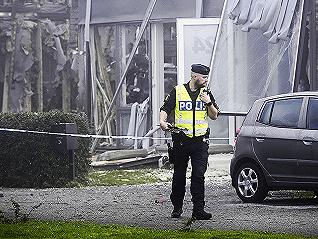深夜福利?_印度妓女BBBBBBWW_.手.動.輸.入.網.址.聯.系.客.服.人.員.lanan_shell
GEN 3.6 Search and Rescue
1. Responsible Authority 1.1 The Search and Rescue (SAR) service in the U.S. and its area of jurisdiction is organized in accordance with the Standards and Recommended Practices of ICAO Annex 12 by the Federal Aviation Administra-tion with the collaboration of the U.S. Coast Guard and the U.S. Air Force. The Coast Guard and the Air Force are the responsible SAR authorities and have the responsibility for making the necessary facilities available. Postal and telegraphic addresses for the Federal Aviation Administration are given in . The appropriate addresses for Coast Guard and Air Force offices are: Air Force Postal Address: Inland SAR Coordinator Commander ARRS USAF RCC Tyndall AFB, FL Telegraphic Address: None. Telex: None. Telephone: 1.800.851.3051, Commercial: 850.283.5955, or Defense Switching Network: 523.5955.
Coast Guard Postal Address: United States Coast Guard Search and Rescue Division (GOSR/73) 400 7th Street, S.W. Washington, D.C. 20590 Telegraphic Address: None. Telex: 89 2427
2. Types of Service 2.1 Details of the Rescue Coordination Centers (RCCs) and related rescue units are given in this section. In addition, various elements of state and local police organizations are available for search and rescue missions when required. The aeronautical, maritime and public telecommunication services are available to the search and rescue organizations. 2.2 Aircraft, both land and amphibious based, are used, as well as land and seagoing vessels, when required, and carry survival equipment. Airborne survival equipment, capable of being dropped, consists of inflatable rubber dinghies equipped with medical supplies, emergency rations and survival radio equipment. Aircraft and marine craft are equipped to communicate on 121.5, 123.1, 243.0, 500 kHz, 2182 kHz, and 8364 kHz. Ground rescue teams are equipped to communicate on 121.5 MHz, 500 kHz, and 8364 kHz. SAR aircraft and marine craft are equipped with direction finding equipment and radar. 3. SAR Agreements 3.1 Bilateral agreements exist between the U.S. and the following neighboring States of the NAM region: Canada and Mexico. 3.1.1 There are two agreements with Canada. One provides for public aircraft of either country which are engaged in air search and rescue operations to enter or leave either country without being subjected to immigration or customs formalities normally required. The other permits vessels and wrecking appliances of either country to render aid and assistance on specified border waters and on the shores and in the waters of the other country along the Atlantic and Pacific Coasts within a distance of 30 miles from the international boundary on those coasts. A post operations report is required. 3.1.2 The agreement with Mexico applies to territorial waters and shores of each country within 200 miles of the border on the Gulf Coast and within 270 miles of the border on the Pacific Coast. It permits the vessels and aircraft of either country to proceed to the assistance of a distressed vessel or aircraft of their own registry upon notification of entry and of departure of the applicable waters and shores. 3.2 In situations not falling under the above agreements, requests from States to participate in a SAR operation within the U.S. for aircraft of their own registry may be addressed to the nearest RCC. The RCC would reply, and issue appropriate instructions.
4. General Conditions of Availability 4.1 The SAR service and facilities in the U.S. are available to the neighboring States within the NAM, NAT, CAR, PAC Regions upon request to the appropriate RCC at all times when they are not engaged in search and rescue activity in their home territory. All facilities are specialized in SAR techniques and functions.
5. Applicable ICAO Documents
6. Differences from ICAO Standards, Recommended Practices and Procedures
Annex 12? . . . . . . . . .? Search and Rescue? Annex 13? . . . . . . . . .? Aircraft Accident Inquiry? Doc 7030? . . . . . . . . .? Regional Supplementary? Procedures for Alerting and? Search and Rescue Ser- vices applicable to the? NAM, NAT, CAR, PAC? Regions.?
6.1 Differences from ICAO Standards, Recom-mended Practices and Procedures are listed in GEN 1.7.
7. Emergency Locator Transmitters
7.1 General 7.1.1 ELTs are required for most General Aviation airplanes. REFERENCE. 14 CFR SECTION 91.207. 7.1.2 ELTs of various types were developed as a means of locating downed aircraft. These electronic, battery operated transmitters operate on one of three frequencies. These operating frequencies are 121.5 MHz, 243.0 MHz, and the newer 406 MHz. ELTs operating on 121.5 MHz and 243.0 MHz are analog devices. The newer 406 MHz ELT is a digital transmitter that can be encoded with the owner’s contact information or aircraft data. The latest 406 MHz ELT models can also be encoded with the aircraft’s position data which can help SAR forces locate the aircraft much more quickly after a crash. The 406 MHz ELTs also transmits a stronger signal when activated than the older 121.5 MHz ELTs. www.aero.cn 航空翻譯 www.aviation.cn 本文鏈接地址:美國航行情報匯編 AERONAUTICAL INFORMATION PUBLICATION AIP 2















